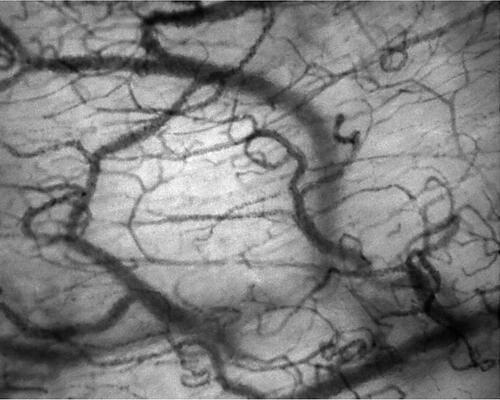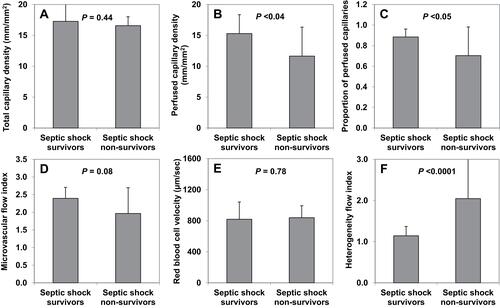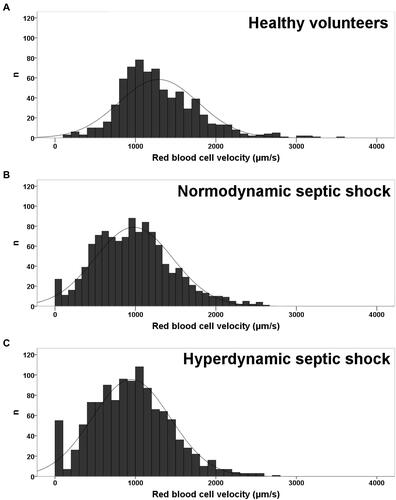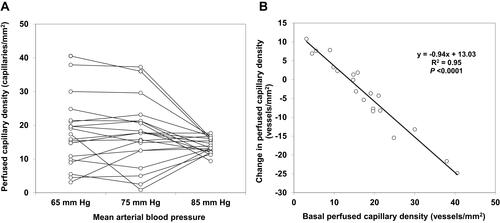Figures & data
Figure 1 High-quality image of the sublingual microcirculation obtained by means of incident dark field (IDF) videomicroscopy, with good contrast, adequate focus, and even illumination.

Figure 2 Microcirculatory variables in healthy volunteers and patients with septic shock. (A) Total capillary density. (B) Perfused capillary density. (C) Proportion of perfused capillaries. (D) Capillary microvascular flow index. (E) Capillary red blood cell velocity. (F) Capillary heterogeneity flow index. Reproduced with permission from Edul VS, Enrico C, Laviolle B, Vazquez AR, Ince C, Dubin A. Quantitative assessment of the microcirculation in healthy volunteers and in patients with septic shock. Crit Care Med. 2012;40(5):1443–1448.Citation21

Figure 3 Microcirculatory variables in survivors and nonsurvivors with septic shock. (A) Total capillary density. (B) Perfused capillary density. (C) Proportion of perfused capillaries. (D) Capillary microvascular flow index. (E) Capillary red blood cell velocity. (F) Capillary heterogeneity flow index. Reproduced with permission from Edul VS, Enrico C, Laviolle B, Vazquez AR, Ince C, Dubin A. Quantitative assessment of the microcirculation in healthy volunteers and in patients with septic shock. Crit Care Med. 2012;40(5):1443–1448.Citation21

Figure 4 Histograms of capillary red blood cell (RBC) velocities. (A) Healthy volunteers. (B) Patients with normodynamic septic shock. (C) Patients with hyperdynamic septic shock. Reproduced with permission of the Americal Thoracic Society. Copyright © 2016 American Thoracic Society. All rights reserved. Edul VS, Ince C, Vazquez AR, et al. Similar Microcirculatory Alterations in Patients with Normodynamic and Hyperdynamic Septic Shock. Ann Am Thorac Soc. 2016;13(2):240–247).Citation36 Annals of the American Thoracic Society is an official journal of the American Thoracic Society.

Figure 5 (A) Sublingual perfused capillary density at 65, 75, and 85 mm Hg of mean arterial blood pressure. (B) Correlation between basal sublingual perfused capillary density (at 65 mm Hg of mean arterial blood pressure) and the change in sublingual perfused capillary density at increasing values of mean arterial blood pressure. Reprinted with permission from Dubin A, Pozo MO, Casabella CA, et al. Increasing arterial blood pressure with norepinephrine does not improve microcirculatory blood flow: a prospective study. Crit Care. 2009;13(3):R92. Copyright © 2009 Dubin et al.Citation34

